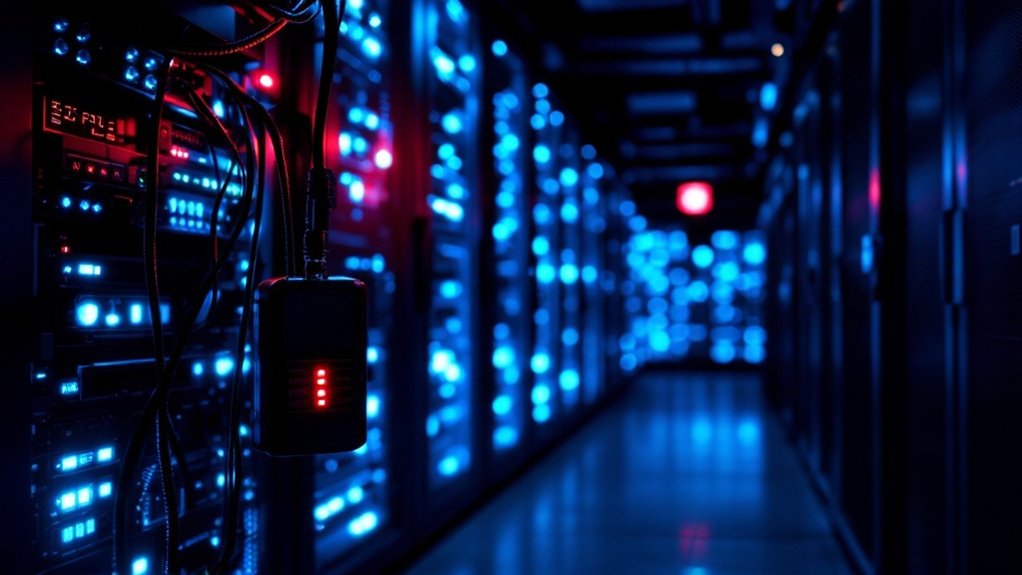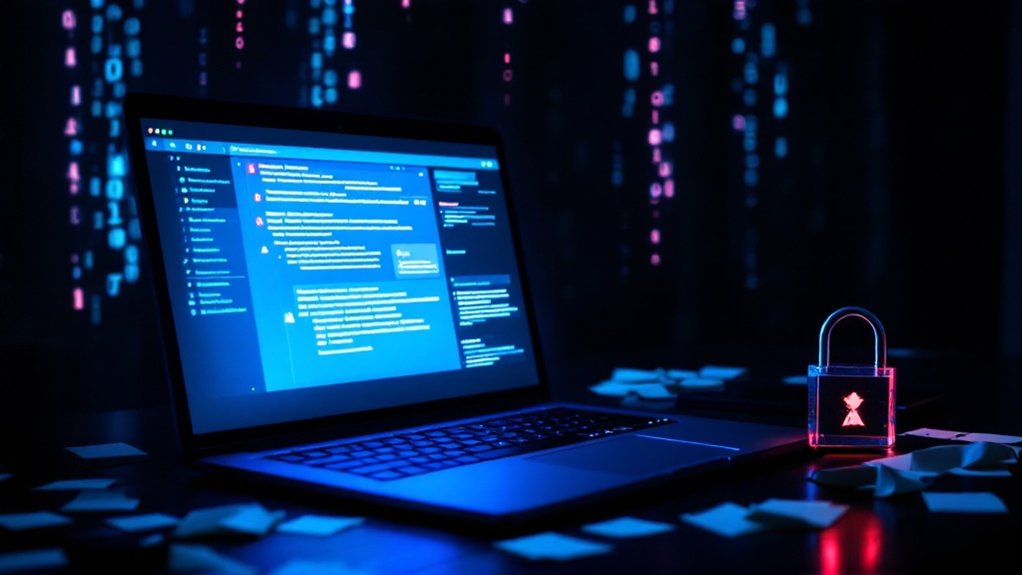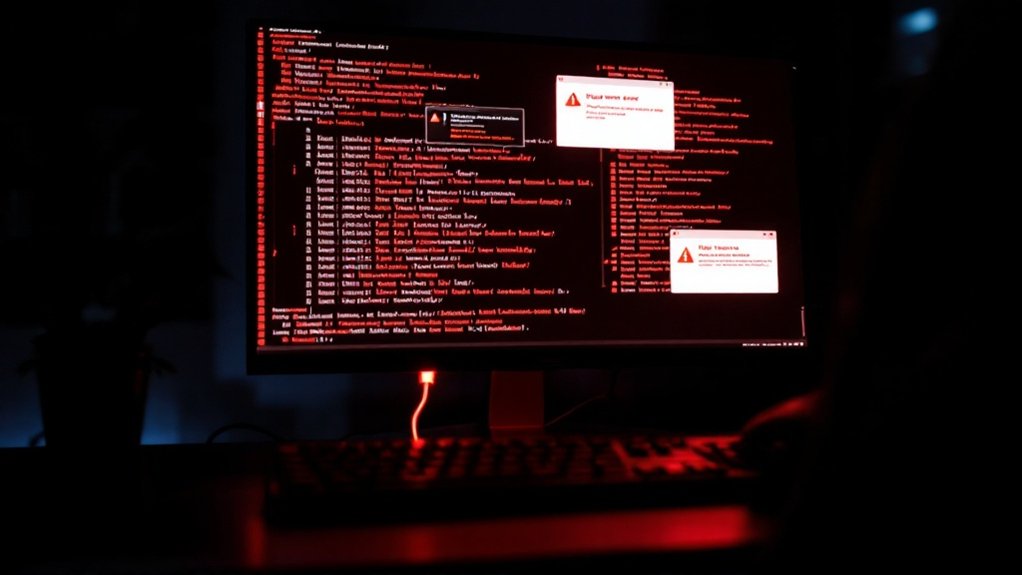The February 2024 Change Healthcare data breach, executed by ransomware group ALPHV/BlackCat, compromised 190 million individuals’ sensitive data through exploited employee credentials. The attack, marking the largest healthcare cybersecurity incident in U.S. history, disrupted medical services nationwide and affected pharmacy networks and claims processing. UnitedHealth Group paid a $22 million ransom to restore systems, during the incident exposed critical vulnerabilities in healthcare cybersecurity infrastructure, illustrating broader implications for the industry’s digital security environment.

Vulnerability in healthcare infrastructure reached unprecedented levels as Change Healthcare, a major healthcare technology company processing $1.5 trillion in annual transactions, fell victim to a devastating ransomware attack on February 21, 2024.
The ALPHV/BlackCat hacking group gained access through compromised employee login credentials, exploiting a critical system that lacked multifactor authentication. UnitedHealth Group, Change Healthcare’s parent company, finally paid a $22 million ransom to regain control of their systems.
The breach’s unprecedented scale affected approximately 190 million individuals, making it the largest healthcare data breach in U.S. history. The compromised information included sensitive personal data such as names, addresses, Social Security numbers, driver’s licenses, health insurance details, medical records, and payment information.
With one-third to one-half of Americans potentially impacted, the incident highlighted the vulnerabilities inherent in centralized healthcare platforms. Initial estimates of 100 million victims were later found to be significantly lower than the actual number affected. This incident joined the alarming trend of 700 breaches reported in the healthcare sector during 2023 alone.
The attack’s ripple effects severely disrupted medical services nationwide, hampering providers’ ability to process payments and maintain normal workflows. Healthcare facilities struggled with limited access to critical systems, as patients faced delays in receiving necessary care. Regular phishing awareness training could have potentially prevented the initial compromise of employee credentials.
The breach particularly affected pharmacy network services and claims processing, demonstrating the healthcare industry’s deep dependence on interconnected digital infrastructure.
UnitedHealth’s response involved collaboration with law enforcement and security experts to conduct forensic analysis and restore functionality to affected systems. By March 8, 2024, electronic prescribing services had been restored, marking the beginning of a gradual recovery process.
The company focused on testing and re-establishing network connectivity while implementing improved security measures.
The incident served as a stark reminder of cybersecurity fundamentals, emphasizing the critical importance of multifactor authentication and strong security frameworks like HITRUST.
Industry experts pointed to the necessity of thorough data protection, encryption protocols, and cross-industry collaboration. The breach underscored the urgent need for healthcare organizations to implement multiple layers of protection and maintain redundant systems to prevent similar catastrophic incidents in the future.
Frequently Asked Questions
How Can Individuals Check if Their Data Was Compromised in the Breach?
Individuals can verify potential data exposure through multiple channels: Change Healthcare’s dedicated website (changecybersupport.com), their support hotline (1-866-262-5342), or the IDX identity protection enrollment page.
Recipients of notification letters, mailed since July 29, 2024, receive direct confirmation. Those without letters can self-monitor through explanation of benefits statements, credit reports, bank accounts, and medical claims for suspicious activity.
What Steps Should Healthcare Providers Take to Protect Patient Data Going Forward?
Healthcare providers should implement thorough encryption protocols for all patient data, establish multi-factor authentication systems, and conduct regular security audits of their networks.
Organizations must likewise strengthen access controls, maintain up-to-date security patches, and provide mandatory cybersecurity training for staff.
Regular risk assessments, network segmentation, and strong incident response plans are crucial, whereas third-party vendor security protocols require thorough vetting and continuous monitoring.
Are There Legal Consequences for Change Healthcare Following the Breach?
Change Healthcare faces significant legal consequences, including 49 consolidated lawsuits in U.S. District Court of Minnesota, with plaintiffs seeking damages for provider losses and consumer costs.
The HHS Office for Civil Rights is conducting a thorough HIPAA compliance investigation of both Change Healthcare and UnitedHealth Group.
UnitedHealth has already recorded $2.5 billion in total impacts through September 2024, including $1.7 billion in direct response costs, with potential additional fines and penalties pending.
How Does This Breach Compare to Other Major Healthcare Data Breaches?
The Change Healthcare breach considerably eclipses previous healthcare data breaches in scale, affecting 190 million individuals compared to Anthem Inc.’s 2015 breach of 78.8 million records.
Healthcare remains the most targeted sector for data breaches, with one-third of major incidents involving hospitals or health systems.
Protected Health Information commands high black market values, selling for up to $363 per record, making healthcare institutions particularly attractive targets for cybercriminals.
Will Affected Patients Receive Compensation or Credit Monitoring Services?
Change Healthcare is offering affected individuals two years of complimentary credit monitoring and identity theft protection services.
Enrollment will be available through a dedicated website or phone number once notifications begin on July 29, 2024.
The company has likewise established a call center providing emotional support services.
Individual notification letters will explain specific impacts and provide detailed instructions for accessing these protective services.









